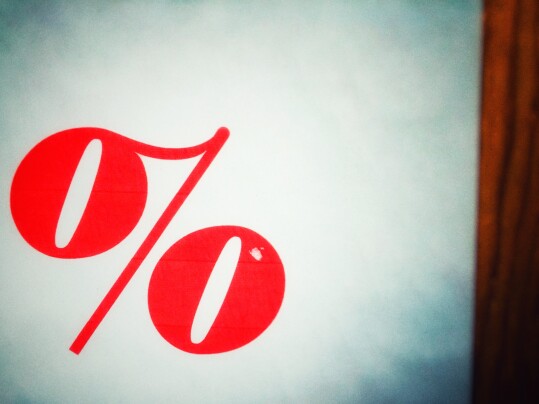Fannie Mae’s most recent Home Purchase Sentiment Index finds Americans optimistic about mortgage rates. In fact, the survey – which asks respondents for their opinions on buying and selling a home, mortgage rates, home prices, their job, and their financial situation – found 36 percent of participants say they expect mortgage rates to fall over the next 12 months. That’s an all-time survey high and it helped push overall housing market sentiment to its highest level in two years. Doug Duncan, Fannie Mae’s senior vice president and chief economist, says Americans are feeling better about the market. “Mortgage rate optimism increased markedly again in January, with a survey-high percentage of consumers anticipating mortgage rate declines over the next year,” Duncan said. “For the first time in our National Housing Survey’s history, a greater share of consumers believe mortgage rates will decrease over the next year, rather than increase. Consumers also expressed greater confidence in their job situations this month, another sign that housing sentiment may continue to improve in 2024.” (source)
Archive for February 2024
Survey Finds Americans Optimistic About Rates
Mortgage Rates Hold Steady Into February
According to the Mortgage Bankers Association’s Weekly Applications Survey, average mortgage rates held steady last week, with only slight changes seen across all loan categories including 30-year fixed-rate loans with both conforming and jumbo balances, loans backed by the Federal Housing Administration, 15-year fixed-rate loans, and 5/1 ARMs. Steady rates helped drive demand for mortgage applications, which saw a 3.7 percent increase from one week earlier. Joel Kan, MBA’s vice president and deputy chief economist, says rates have been steady since the beginning of the year. “Mortgage rates have stayed close to where they started the year, despite swings in Treasury yields because of slowing inflation offset by stronger than expected readings on the job market,” Kan said. “Rates at these levels have not prompted much of a reaction in the refinance market, as most homeowners have mortgages with much lower rates. However, purchase activity has been strong to start 2024 compared to the final quarter of 2023.” The MBA’s weekly survey has been conducted since 1990 and covers 75 percent of all retail residential mortgage applications. (source)
Home Price Index Finds Widespread Gains
The S&P Case-Shiller Home Price Indices is considered among the leading measures of U.S. home prices. It tracks home values across all nine census divisions and has been collecting data for more than 27 years. Its most recent release shows home prices up over year-before levels in every region of the country. Brian Luke, head of commodities, real & digital assets at S&P, says the gains were widespread. “The Northeast and Midwest recorded the largest gains with returns of 6.4 percent and 6.3 percent, respectively,” Luke said. “Other regions are not far behind with the slowest gains in the West of 3 percent. This month’s report revealed the narrowest spread of performance across the nation since the first quarter of 2021.” In other words, home prices have been pretty consistent lately, no matter where you look. But while prices continue to move higher than year-before levels, month-over-month data found them slowing – an indication that annual gains may also slow in the months ahead. (source)
Median Mortgage Payment Falls Again
Each month, the Mortgage Bankers Association tracks the national median mortgage payment. Its Purchase Applications Payment Index looks at the prospective payments of home buyers applying for loans to determine whether affordability is improving or worsening. According to its most recent release, mortgage payments are falling. In fact, the median payment fell to $2,055 at the end of last year, down from $2,137 in November. Edward Seiler, MBA’s associate vice president, housing economics, and executive director, Research Institute for Housing America, says affordability should only get better as conditions improve. “Home buyer affordability improved for the second consecutive month in December as interest rates declined significantly from recent highs,” Seiler said. “While the average median purchase application amount increased to $306,450, MBA expects that affordability conditions will continue to improve as mortgage rates fall further and as housing inventory continues to increase.” (source)
Nearly Half Of All Homes Are Equity Rich
Forty-six percent of mortgaged residential properties were considered equity rich in the fourth quarter of 2023, according to ATTOM Data Solutions’ most recent U.S. Home Equity & Underwater Report. A property is equity rich when the combined amount of loan balances secured by it is no more than half its estimated market value. Needless to say, owning an equity-rich property is a good situation for homeowners to be in, and a lot of them are. Homeowners have benefited from years of rising home prices. In fact, 95 percent of homeowners have built up some equity, even if their home isn’t considered equity rich. But while homeowners have had it good in recent years, there are signs the market has begun to cool. Rob Barber, ATTOM’s CEO, says the upcoming buying season will determine by how much. “There are increasing signs suggesting that the extended period of prosperity in the U.S. housing market may be showing signs of easing,” Barber said. “This year’s peak buying season will tell us a lot about whether things really have settled down long-term.” (source)
Number Of Homes For Sale Is Growing
When there aren’t enough homes for sale, the market is more challenging for home buyers. For one, there aren’t as many options to choose from, which means buyers will have a harder time finding a house that fits their needs. Beyond that, too few available homes puts upward pressure on prices due to bidding wars and increased competition. That’s why new data from the National Association of Realtors’ consumer website is good news for potential buyers. The website’s January Housing Report found the number of homes actively for sale was up 7.9 percent in January, with newly listed homes up 2.8 percent. The increases are a much-needed boost, as the number of homes for sale still trails pre-pandemic levels. Danielle Hale, the site’s chief economist, says buyers and sellers are ready. “We are seeing increases in inventory and, importantly, gains in newly listed homes for sale indicating sellers are more ready to make moves,” Hale said. “Time on market fell, signaling that buyers are ready to make offers on these new options.” (source)
Mortgage Rates Largely Unchanged Last Week
According to the Mortgage Bankers Association’s Weekly Applications Survey, average mortgage rates were largely unchanged last week from the week before. Rates were flat for 30-year fixed-rate loans with both conforming and jumbo balances. Loans backed by the Federal Housing Administration, 15-year fixed-rate loans, and 5/1 ARMs all saw slight increases. Joel Kan, MBA’s vice president and deputy chief economist, says rates were flat but application demand still fell. “Mortgage rates changed little last week, with the 30-year fixed rate … close to where it has been for the past month, but lower than the recent peak in October 2023,” Kan said. “Applications decreased compared to a holiday-adjusted week, driven by a decline in purchase applications that offset a slight increase in refinance activity.” Also in the report, the average loan size last week was $444,100, the highest it’s been since May 2022. The MBA’s weekly survey has been conducted since 1990 and covers 75 percent of all retail residential mortgage applications. (source)







